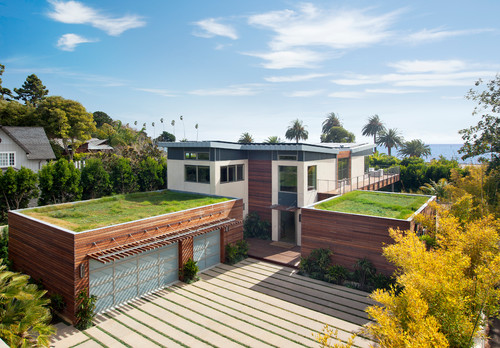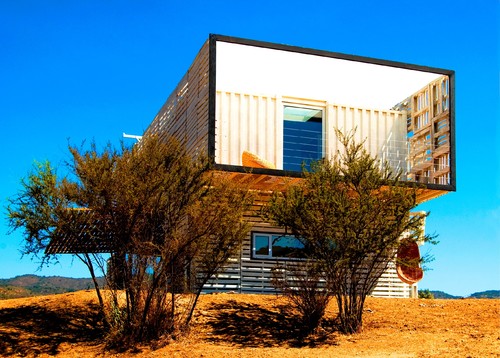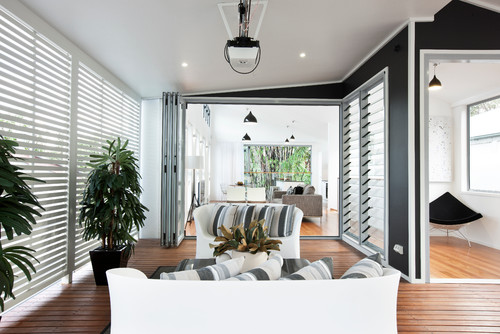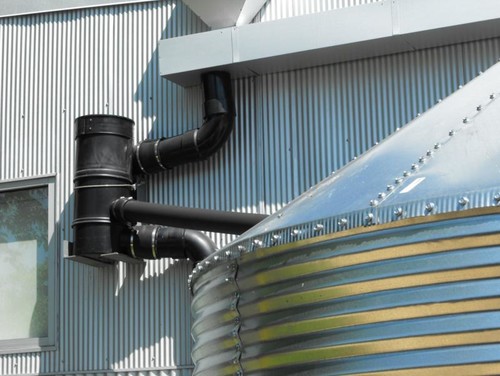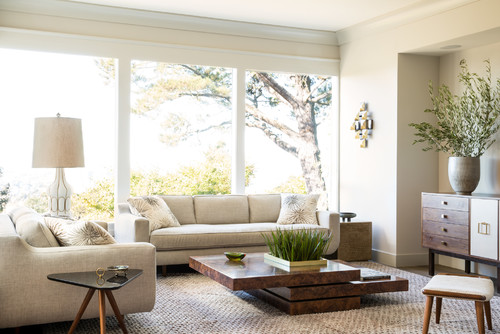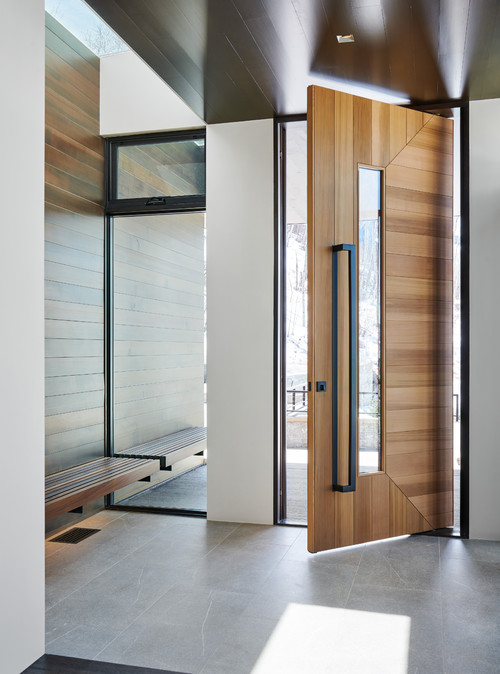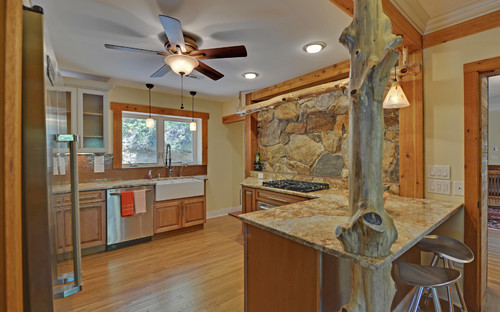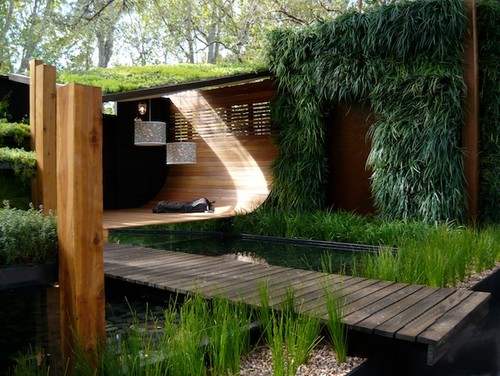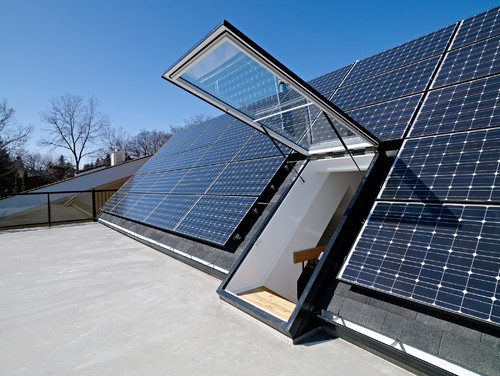Sustainability has gained momentum in the building industry over the last decade. However, there are ample notions and ideas about sustainability that make it more of an upscale fad than a way of life. To incorporate sustainability, one needs to be clear on the concept—what are sustainable buildings?
Sustainable buildings are efficient in resource use and performance, which helps optimize water and energy use. They are generally built using materials that exhibit high performance and have a low impact on environmental degradation. Sustainability is a concept that should be approached holistically, not as a single aspect.
Of course, the primary considerations while designing a sustainable home are the materials and techniques, but fenestrations, furnishings, HVAC system, lighting, plumbing, electrical appliances and fixtures, and harvesting natural resources (sun, water, and wind) should also be given due consideration. Moreover, your habits and mindful alterations to them would certainly help you design a sustainable home that will be affordable in various ways.
Sustainable practices can be easily incorporated with the design of a house to make it affordable and, at the same time, more efficient. It not only helps make the house affordable but also helps address water crisis, climate responsive design, self-sustenance for the occupants, wellness and other uncountable issues. There are times when the initial costs of a sustainable solution might be high, but in the long run, the maintenance or running costs are affordable. Therefore, one also needs to decide the context of affordability that they are looking at – short-term or long-term. One has to be clear of their concepts and, most importantly, their budget to kickstart a sustainable and affordable home project. To help you in designing a sustainable and affordable home, here are 10 clever tips –
1. Choose the Materials Wisely
Regarding sustainability, one should prefer locally available materials and adapt to local climatic conditions. It is imperative to use locally available materials as it saves on transportation costs or added labour costs, thereby saving money and contributing to the environment too. Using sustainable architecture for homes with local resources satisfies climatic needs, such as stone or mud in Rajasthan's hot and dry climate. This not only supports affordable, sustainable living ideas but also gives employability to local craftspeople, enhancing the value of your dream abode. In addition to choosing locally available materials, one should focus on materials that are highly durable and last for long. This is one of the easiest yet wisest tips for designing a home.
2. Recycle and Reuse
To adopt a sustainable approach, one’s life mantra should be ‘Recycle and Reuse’. Many materials and products can be reused or repurposed by incorporating certain modifications. People might believe that their homes should be made of only new materials. However, we should create awareness and deem the thought process redundant. Repurposing salvaged materials aligns perfectly with budget-friendly green home design while reducing waste. Numerous materials have about 80- 100% recyclability, therefore making such materials or products viable for use. Many design practices worldwide have created a focus on repurposing and recycling used materials.
3. Adopt Eco Finishes
Sustainability aims to use materials and finishes that have the least negative impact on the environment. Paints, polishes, varnishes, and other surface finishes have VOCs, formaldehyde, and other toxic gases. Opting for eco-friendly house design tips, such as non-toxic finishes, ensures a healthier living environment while contributing to affordable eco-friendly home ideas.
Image credit- stockvault
Considering the sun's path is essential for energy-efficient home design tips. It helps determine the overhangs or other passive strategies such as courtyards, louvers, etc. While designing to respond to the sun conditions, there have been innovations in glass to react efficiently to thermal heat gain. Innovative solutions like adjustable louvers and advanced glass designs help build green homes that are both functional and visually appealing. These louvers can be manually or electronically operated to adjust the angle of the fins, thereby giving adequate shade during the sunny hours of the day.
4. Respond to Sun Efficiently
5. Harvest and Recycle Water
Water is a scarce yet essential resource. Planning for rainwater harvesting and wastewater reuse helps create sustainable homes by conserving resources for future generations.
Investing in affordable, sustainable living ideas like rainwater harvesting systems ensures long-term benefits in water management. It is not only about being sustainable for the heck of it but also being conscious of practices that would help sustain future generations. Planning for rainwater harvesting ought to be taken seriously to be able to conserve and harvest water. Moreover, with a conscious evolution in technology, some fixtures and innovations can be utilized to recycle and reuse the water in our households. Wastewater can also be reused efficiently. One needs to make conscious efforts to be able to adopt sustainability in this context.
6. Focus on Natural Light and Ventilation
Natural light and ventilation are key to energy-efficient home design tips. Sheepishly, many people tend to ignore them while designing, or there might be site-based constraints. To be clear, if your house receives ample daylight and natural air throughout the day, you tend to cut on your huge energy consumption bills. While switching on and off electrical fittings and electronics has been imbibed in us from childhood, we must foster concentrated efforts towards getting daylight and natural air. It is not only a sustainable tip for your home but a much-needed factor for personal wellness and mindfulness. Incorporating skylights, large windows, and light shelves into your design fosters a happier, healthier living space while supporting sustainable home design tips.
While welcoming light and air indoors, remember to heed the solar movement and directions in your location. Believe me, natural light and air can make your home happy and keep many disease-causing organisms at bay! Moreover, natural light has a charisma that can’t be matched with anything!
7. Consider Low-cost Construction Details
Regarding affordability, low-cost construction techniques cannot be left behind. These techniques help the construction process efficiently and save on the construction material. Low-cost construction techniques, such as rat trap bond walls, save materials and reduce costs, aligning with designing sustainable homes on a budget. Innovations in this area can promote affordable, eco-friendly home ideas without compromising quality. Low cost does not in any way relate to inferior-quality construction. It aims to innovate construction techniques to save on material and construction time, thereby lowering the overall cost. We automatically help adopt and promote sustainable practices when we adopt such construction practices.
8. Use Energy-efficient Elements
Energy efficiency has become synonymous with sustainability, and rightly so. To save energy and, thereby, natural resources, we should concentrate on installing energy-efficient fixtures. Consumers today know about energy-efficient fittings, local energy ratings, and the like.
In our bright century, homes are also steadily becoming smart. One way is by installing sensors in the spaces to operate the fixtures. With a sensor for light and fan operations, even if a user fails to turn off the lights and fans, the sensor would do the job. Many modern structures have adopted this technology for common spaces, such as passageways, parking, etc., to conserve energy. Such energy-efficient home design tips not only conserve resources but also contribute to affordable sustainable living ideas over the long term.
9. Adopt a Green Cover
Adopting a green cover is not only a sustainable idea for a building but can also sustain its occupants. Green covers on walls and roofs can help achieve comfortable ambient temperatures indoors. This simple yet effective eco-friendly house design tip also supports mental wellness and sustainability. In addition, greenery has a natural beauty that adds to the overall aesthetic of the building—indoors and outdoors. A vegetable garden can further integrate budget-friendly green home design into daily life.
10. Harvest Solar Energy
Harvesting natural resources is the need of the hour, and if it is integrated with the construction industry, it can provide solutions that are sustainable and affordable in the long run. Solar energy is abundant and essential for tips for building green homes. There have been quite some innovations in the field of solar energy. From photovoltaic cells to solar water heaters, harnessing solar power reduces energy costs and promotes sustainable architecture for homes. Solar panels can initially be heavy on the pocket, but they have proven affordable in the long run. Certain facilities in the world are running solely on solar energy. The evolution and innovation in this sector have led to the development of panels that can respond to varied parameters. These can be designed and integrated with the structure to add aesthetical value to the structure instead of being an eyesore or an additional structure to care for.
This is one of the sustainable measures everyone should adopt in their homes to do their bit for the environment. Some materials, such as solar glass, are being experimented with that can harvest solar energy and, simultaneously, be used as construction material.
Sustainability is a concept that one should understand first before integrating it into the design. More than anything sustainability should absolutely be the way of our life, thus helping us put indigenous solutions to effective use. One should also understand that affordability should be appreciated for the long term, not immediate or short-term. Sustainability and affordability are two peas in a pod. If you undertake sustainable practices to construct your home, you sure are going to reap benefits both on financial and health fronts. Sustainable practices are often related to going back to our roots of traditional practices and, at times, lead us to adopt innovative technologies for our home construction. These were 10 clever yet practical tips to get you started on designing a sustainable and affordable home.
We would certainly love to read your thoughts about sustainable and affordable practices that you vouch for, please feel free to share them with us in the comments below!
If you found this helpful, check out these too Pro Tips to Complete an Architectural Project within Budget


